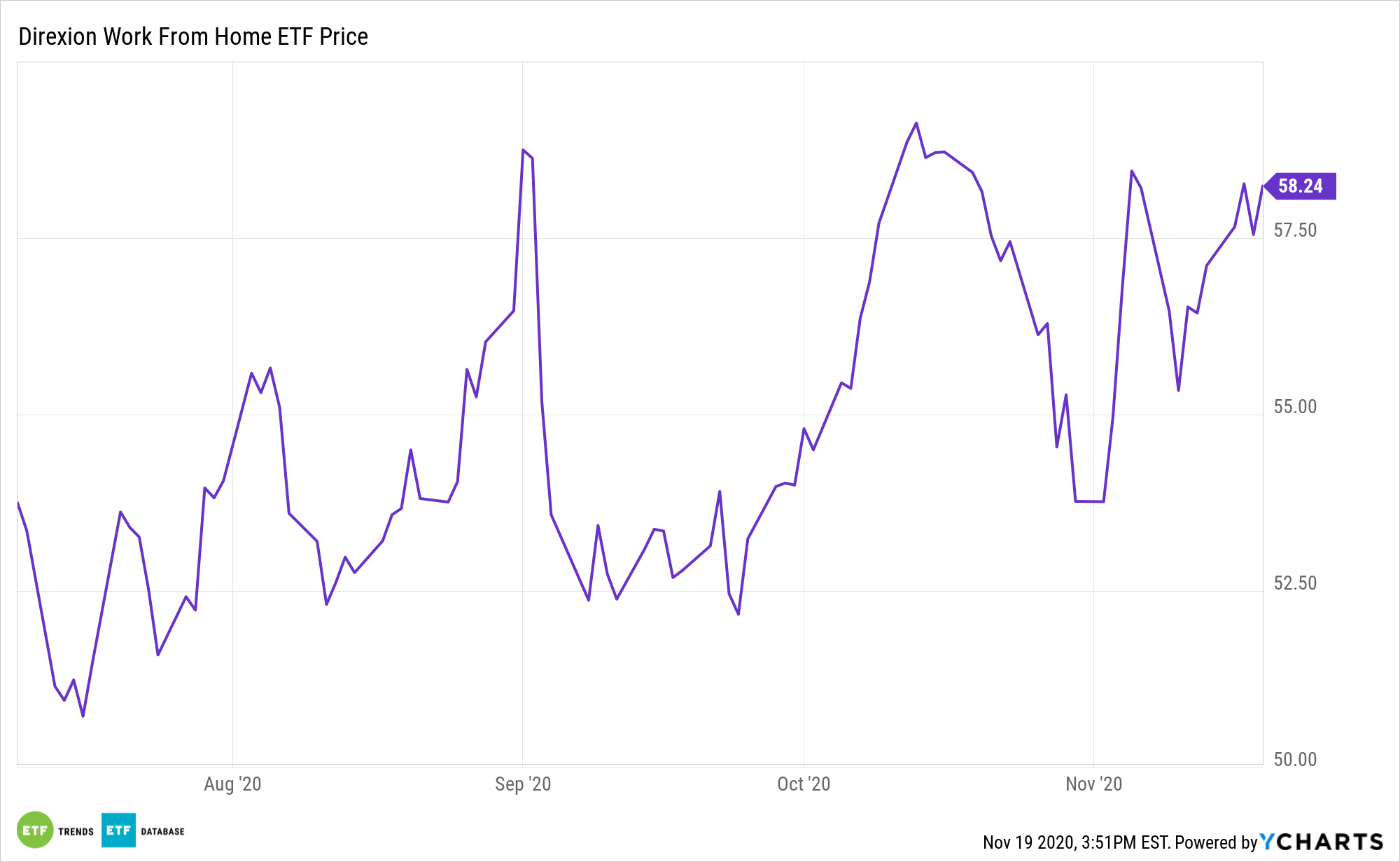Exchange traded fund investors can capitalize on the new normal at work and at home by positioning for the acceleration of global consumer trends and diversifying core equity exposure in new and valuable ways.
In the recent webcast, Work From Home Forever? A Growing Movement, A Unique Investment, David Mazza, Managing Director, Product, Direxion; and Sylvia Jablonski, Managing Director, Head of Capital Markets & Institutional Strategy Team, Direxion, highlighted advances in technology that allow for greater remote productivity, along with ongoing trends toward more flexible and remote work locations. Meanwhile, society has embraced the idea that a work-life balance does not require certain job functions to be executed in a traditional office setting, and companies have become more comfortable in allowing remote work.
Working at home has a rich history pre-COVID, but the coronavirus pandemic and subsequent Great Shutdown only accelerated the trend. About 43% of employed Americans already spend at least some time working remotely, and 8 million U.S. workers already work at home full-time. Looking ahead, 75% of Fortune 500 CEOs say they plan to accelerate the technological transformation of their companies, and about 54% of companies plan to make a remote work option permanent.
The push toward remote work may also benefit businesses. According to an International Workplace Group’s recent survey, 65% of business leaders surveyed believed a flexible workspace reduces both capital and operational expenditure, manages risk, and consolidate portfolios. Furthermore, 85% of the respondents stated that productivity increased as a result of greater flexibility.
The remote work theme may also be an excellent way to recruit workers moving forward. According to a recent Deloitte survey, 43% of millennials were allowed to work from home or other locations, but 75% would prefer to work remotely either completely or partially.
In our own survey of over 2,000 financial advisors, ETF Trends has found that financial advisors exhibited significant results in technology use, communications, client relationships, and productivity. Before the pandemic, over 50% of advisors never worked remotely. Due to the sudden Great Shutdown, financial advisors have been embracing new technology and keeping pace with the changing workplace, becoming more technology savvy in this new environment.
Most advisors also believe that COVID’s work from home orders have had no impact on their productivity, with 78% of respondents rating their productivity as Good or Excellent. They also noted that they have received enough communication from managers and leadership despite being stuck at home, with the majority showing good communication among those they work with.
Additionally, most advisors believe that COVID’s work from home orders have had no impact on their relationships with clients.
Looking ahead, we found that most financial advisors favor some office time, but would like to see a blend of working from home after COVID-19.
To help investors home in on this developing trend, Direxion has highlighted four established and emerging technological pillars enabling remote work, including:
- Cloud Technologies. Due to the need for data to be securely stored, accessed, and shared remotely, companies offering cloud technology services and on-demand availability to computer systems stand to benefit.
- Cybersecurity. More flexible workspaces open the potential for increased cyber threats and increase the demand for companies offering cybersecurity systems.
- Online Project and Document Management. Remote work requires applications that enable the management of projects and collaboration across individuals and teams, boosting the need for tools that enable this to occur efficiently and securely.
- Remote Communications. With workers in sporadic locations, the need for videoconferencing, instant messaging, and email applications will all increase.
The recently launched Direxion Work From Home ETF (WFH) offers access to companies across these four technology pillars, allowing investors to gain exposure to the companies that stand to benefit from an increasingly flexible work environment.

Companies are selected for inclusion in the index by ARTIS, a proprietary natural language processing algorithm, which uses keywords to evaluate large volumes of publicly available information such as annual reports, business descriptions, and financial news. The ARTIS algorithm then ranks these companies based on their relevance to the keywords and assigns a score to each company. The Index consists of the top 10 rated companies in each identified category.
For example, the Cloud Technologies pillar includes companies like Microsoft, Amazon.com, and IBM. The Online Project and Document Management Pillar includes Upland Software, Box, and Atlassian Corporation. The Cyber Security Pillar includes Fortinet, Okta, and Crowdstrike. Lastly, the Remote Communications Pillar includes Zoom Video Communications, 8×8, and America Movil.
Financial advisors who are interested in investment ideas for the current environment can watch the webcast here on demand.
